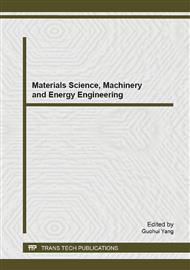p.9
p.17
p.23
p.28
p.34
p.40
p.46
p.53
p.57
Influences of Nano-Silica Addition on Diluent/Epoxy Mechanical Properties
Abstract:
In this paper, epoxy, diluents, nanosilica powders and hardeners are mixed and cured form nanocomposites under different production conditions such as the amount of added nanopowders, diluents, etc. Through the use of an impact tester and a Shore durometer, the influences of the amount of added diluents and silica on mechanical properties are investigated. The results show that adding nanopowers has little effect on increasing the Shore D hardness. However, adding diluents will reduce the Shore D hardness of the composites. Without diluents, the composite added 1 wt.% of nanopowders has a maximum impact value of 6.63 KJ/m2. Adding 3.2 wt.% of diluents, the nanocomposite has a maximum impact value of 5.50 KJ/m2, also happens when the amount of added nanopowders is 1 wt.% of. Adding nanopowders more than 1 wt.% will reduce the impact strength. Nevertheless, adding nanopowders to 3 wt.%, the value is still higher than the composites without nanopowders.
Info:
Periodical:
Pages:
34-39
Citation:
Online since:
December 2013
Authors:
Keywords:
Price:
Сopyright:
© 2014 Trans Tech Publications Ltd. All Rights Reserved
Share:
Citation:


